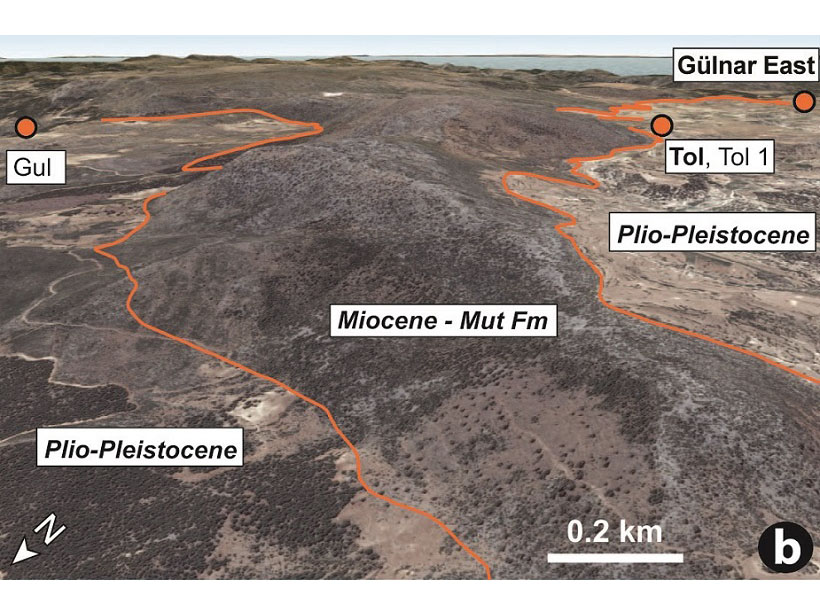Source: Tectonics
The southern margin of the Central Anatolian plateau in Turkey has attracted the attention of a wide range of geoscientists due to well preserved, uplifted marine sediments and geomorphic markers that offer the hope of directly linking crustal and mantle processes to surface deformation. Geodynamic processes suggested previously to explain the uplift history include underplating, crustal shortening, lithospheric delamination, mantle upwelling, and slab break-off. Öğretmen et al. [2018] use biostratigraphy and revised mapping of marine deposits capping the southern margin of the Central Anatolian plateau to demonstrate remarkably fast uplift rates of 3 millimeters per year averaged over the last 450 thousand years. Their new data is a smoking gun for slab break-off, a process that has been commonly invoked in the literature, in southern Turkey as well as in other convergent tectonic settings, but has been notoriously difficult to link directly to surface deformation.
Citation: Öğretmen, N., et al. (2018). Evidence for 1.5 km of uplift of the Central Anatolian Plateau’s southern margin in the last 450 kyr and implications for its multiphased uplift history. Tectonics, 37. https://doi.org/10.1002/2017TC004805
—Taylor Schildgen, Editor, Tectonics
Text © 2018. The authors. CC BY-NC-ND 3.0
Except where otherwise noted, images are subject to copyright. Any reuse without express permission from the copyright owner is prohibited.

